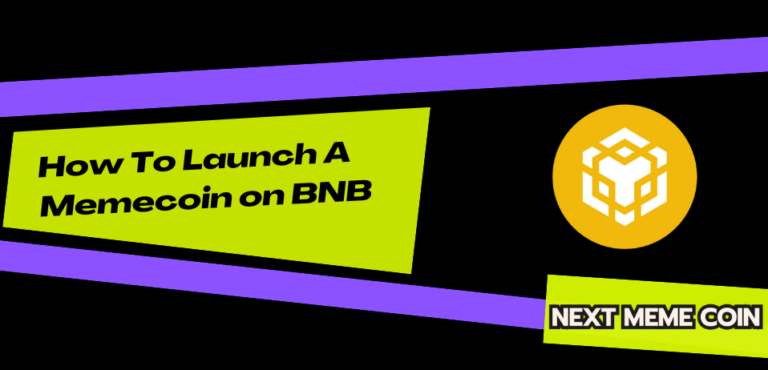How Much Does It Cost to Make a Meme Coin?
Picture this: a fleeting joke on X morphs into a digital token that captures the zeitgeist, traded by thousands in a matter of hours. That’s the allure of meme coins—a wild, chaotic dance of internet culture and cryptocurrency that’s as thrilling as it is unpredictable. The meme coin frenzy shows no signs of slowing. From Dogecoin’s humble beginnings to the meteoric rises of tokens like Sudeng on the Sui blockchain, these quirky assets have proven they’re more than just punchlines. But here’s the question buzzing through every curious mind: how much does it really cost to bring one of these digital jests to life?
I’ve spent years unraveling the threads of blockchain technology, and the meme coin phenomenon is a fascinating tapestry of creativity, code, and community. Whether you’re a dreamer with a viral idea or a pragmatist weighing the risks, understanding the financial landscape of meme coin creation is your first step. Costs can range from a few hundred dollars to tens of thousands, depending on your ambitions and approach. In this guide, we’ll peel back the layers—exploring development, deployment, marketing, and more—infusing the latest 2025 insights with a touch of wonder at what this space has become. Let’s dive into the numbers and see what it takes to launch your own meme coin.
The Meme Coin Phenomenon: Why Costs Matter
Meme coins are the jesters of the crypto court—born from humor, fueled by hype, and often defying logic. In 2024 alone, over 5.3 million meme coins launched on platforms like Pump.fun, averaging 15,000 new tokens daily. By early 2025, the meme coin market cap swelled to $120 billion, a 500% leap from the previous year. Yet, for every success like Sudeng ($HIPPO), which hit $0.018 in October 2024, countless others fade into obscurity. Costs matter because they’re the bridge between a fleeting idea and a thriving token. Spend too little, and your coin might lack the polish to stand out; spend too much, and you risk sinking before the hype begins.
The beauty of meme coins lies in their accessibility. You don’t need a PhD in computer science or a vault of gold to start. With blockchains like Sui offering low fees and high scalability, the barrier to entry is lower than ever. But accessibility doesn’t mean free—every step, from coding to community-building, carries a price tag. So, what are we looking at in 2025? Let’s break it down, piece by piece, and uncover the real investment behind the memes.
Step 1: Conceptualization and Planning
Every meme coin starts with a spark—an idea that tickles the funny bone or taps into a cultural pulse. This stage is mostly sweat equity, but it’s not without cost. Brainstorming a name, symbol (like $AQUA for our hypothetical “AquaLad”), and a backstory might be free if you’re a lone visionary. But if you’re collaborating with a team or hiring a creative consultant, expect to shell out $100 to $500. In 2025, branding agencies specializing in crypto charge around $200 for a basic package—think logo sketches and a tagline like “Flooding the market with fun.”
Then there’s tokenomics—the economic skeleton of your coin. Will you mint a billion tokens or a quintillion? Will you burn supply or airdrop to X followers? A basic plan is DIY territory, but for a polished model, a blockchain consultant might cost $500 to $1,500. Sites like Nadcab estimate that even simple meme coin tokenomics design can hit $1,000 if you want expert input. Total for this stage? Anywhere from $0 (solo hustle) to $2,000 (professional polish).
Step 2: Development Costs
Here’s where the rubber meets the road: coding your meme coin’s smart contract. In 2025, blockchains like Sui, Solana, and Ethereum remain top picks, each with distinct cost profiles. Sui, with its Move language, is a darling for its speed and low fees—perfect for meme coins craving viral trades. Writing a basic contract yourself is free if you’ve got coding chops. The Sui CLI and sample code from docs.sui.io make it approachable, even for novices willing to learn.
Don’t code? No problem. Hiring a developer in 2025 ranges widely. A freelancer on Upwork might charge $300 to $1,000 for a simple token, while a blockchain firm like Antier Solutions quotes $3,000 to $7,000 for a custom job with features like staking or burns. Devtechnosys pegs Sui meme coin development at $3,000 to $8,000, factoring in complexity. Add $500 to $1,000 if you want a security audit—crucial to avoid rug-pull accusations. So, development costs span $0 (DIY) to $9,000 (pro with audit).
Step 3: Blockchain Deployment Fees
Deploying your coin means putting it on the blockchain—testnet first, then mainnet. Testnet trials on Sui are free, with faucets doling out play SUI for experiments. Mainnet deployment, though, incurs gas fees. In 2025, Sui’s fees are a whisper—often under $0.01 per transaction, thanks to its parallel processing. Publishing a contract might cost $0.50 to $2, depending on complexity. Compare that to Ethereum, where gas fees can spike to $20-$100 during congestion, or Solana, hovering at $0.50 to $1. Sui’s affordability keeps this stage light: $1 to $5 total.
You’ll also need SUI tokens to fund your wallet—say, 1 SUI ($2.40 as of March 2025, per CoinMarketCap) for initial transactions. Tiny, yes, but every penny counts when you’re bootstrapping a meme empire.
Step 4: Branding and Design
A meme coin without a killer logo is like a joke without a punchline—forgettable. In 2025, a decent logo from a graphic designer on Fiverr runs $50 to $200. Want a full branding suite—logo, banners, social media assets? That’s $200 to $1,000, per Maticz estimates. High-end designers with crypto cred might demand $2,000 to $7,000 for a standout mascot (think Moo Deng’s hippo charm). For our AquaLad, a water sprite avatar might cost $150 from a mid-tier artist. Total here: $50 to $7,000, depending on your flair.
Step 5: Marketing and Community Building
Here’s the make-or-break moment. A meme coin’s soul is its community, and building one costs both time and money. In 2025, X remains the heartbeat of crypto hype—posts about $HIPPO or $FUD rack up thousands of likes daily. Basic organic buzz (memes, threads) is free, but amplification isn’t. Social media ads—X, Telegram, Discord—range from $500 to $5,000, depending on reach. Influencer collabs? A micro-influencer with 10K followers might charge $200, while a crypto whale with 100K+ could demand $5,000 per shoutout.
Airdrops, a meme coin staple, mean giving away tokens—say, 5% of your supply. If 1 AQUA = $0.0001 at launch, a million-token airdrop costs $100 in value, plus $1-$2 in Sui fees. Hosting AMAs or giveaways adds $100 to $1,000. Maticz suggests $1,000 to $15,000 for a full campaign, aligning with 2025 trends where $BLUB’s community grew via $47M market cap hype. Total: $500 to $20,000.
Step 6: Exchange Listing Fees
Want your coin tradable? Decentralized exchanges (DEXs) like Cetus on Sui are cheap—adding liquidity costs $50 to $500 in SUI and token value. Centralized exchanges (CEXs) are pricier. Small platforms charge $500 to $5,000, while giants like Binance or KuCoin demand $10,000 to millions, per Nadcab. In 2025, most meme coins start on DEXs, scaling to CEXs if they hit big. Initial listing: $50 to $5,000.
Step 7: Legal and Compliance (Optional)
Not every meme coin bothers with legalities—Dogecoin didn’t—but 2025’s regulatory landscape is tightening. A basic consultation with a crypto lawyer costs $500 to $2,000 to ensure you’re not courting trouble. Want a full compliance package (whitepaper review, tax advice)? That’s $5,000 to $15,000. Optional, but wise if you’re aiming beyond a quick pump: $0 to $15,000.
Total Cost Breakdown
Let’s tally it up for AquaLad in 2025:
- Conceptualization: $0-$2,000
- Development: $0-$9,000
- Deployment: $1-$5
- Branding: $50-$7,000
- Marketing: $500-$20,000
- Listing: $50-$5,000
- Legal: $0-$15,000
Grand Total: $601 to $63,005. A bare-bones DIY launch on Sui might cost $601—code it yourself, minimal branding, organic hype. A polished, pro-tier coin with all the trimmings? Up to $63,000. Real-world range for most projects in 2025, per industry quotes, is $3,000 to $25,000.
Factors That Swing the Cost
Why such a spread? It’s all about choices. Blockchain matters—Sui’s sub-cent fees beat Ethereum’s volatility. DIY vs. outsourcing shifts the needle—coding solo saves thousands. Scale matters too—a quiet launch costs less than a viral blitz. In 2025, Sui’s efficiency keeps base costs low, but ambition drives the ceiling skyward.
The Risks and Rewards
Here’s the rub: cost doesn’t guarantee success. AAA Cat surged 665% in early 2025, yet 85% of Sui’s $HIPPO value vanished in a Q1 dip. You might spend $10,000 and see millions in market cap—or lose it all to apathy. The reward? A viral hit like $TRUMP’s $12B cap in days. The risk? A ghost town of unsold tokens. It’s a gamble, but one with a low entry ticket.
Why It’s Worth It (Or Not)
Creating a meme coin in 2025 is like tossing a pebble into a digital pond—you might make ripples or a tsunami. Sui’s ecosystem, with its $300M meme coin market cap, offers fertile ground. It’s not just about money; it’s about joining a cultural wave, testing your mettle in Web3’s wild frontier. Worth it? If you’ve got the stomach for uncertainty and a knack for memes, absolutely. If you crave stability, maybe not.
So, how much does it cost? A few bucks to a small fortune, depending on your vision. As I reflect on this crypto carnival, I’m struck by its duality—frivolity masking profound potential. What’s your meme coin dream? The numbers are clear; the stage is set. Time to decide if you’ll play the jester or watch from the wings.






https://telegra.ph/Why-Customer-Experience-Defines-a-Contractors-Ranking-Position-08-25
Did you know that in 2025, only around 2,000 companies earned a spot in the Top Countertop Contractors Ranking out of over ten thousand evaluated? That’s because at we don’t just accept anyone.
Our ranking is independent, constantly refreshed, and built on more than 20 criteria. These include ratings from Google, Yelp, and other platforms, pricing, responsiveness, and craftsmanship. On top of that, we conduct 5,000+ phone calls and 2,000 estimate requests through our mystery shopper program.
The result is a standard that benefits both clients and installation companies. Homeowners get a proven way to choose contractors, while listed companies gain recognition, digital exposure, and even new business opportunities.
The Top 500 Awards spotlight categories like Established Leaders, Best Young Companies, and Most Affordable Contractors. Winning one of these honors means a company has achieved elite credibility in the industry.
If you’re searching for a countertop contractor—or your company wants to stand out—this site is where trust meets opportunity.
Для каждых автовладельцев — от начинающих до опытных, открыт портал с полезными публикациями, глоссарием, новостями и видеоматериалами. Читать полезности > сайт-блог [url=https://citroen-avtoservise.ru]https://citroen-avtoservise.ru[/url] публикует рекомендациями для каждого. Посмотри больше — изучить статьи.
Blade Master играть в Покердом
Женский сайт https://lubimoy.com.ua стиль, уход за собой, психология, материнство, работа и хобби. Актуальные статьи, тренды и экспертные советы. Всё самое важное для гармоничной жизни и успеха.
Kraken — передовая платформа для reliable transactions, обеспечивающая высокий уровень protection и anonymity ваших data. Благодаря инновационным технологиям шифрования и guaranteeing personal data, Kraken provides maximum privacy при conducting транзакций all types. Открой current сайт Kraken и начни secure transactions без задержек. Платформа предлагает интуитивно понятный интерфейс, который подходит как для профессиональных пользователей, так и для тех, кто только начинает interact с secure онлайн-сервисами. Благодаря высокому уровню security, вы можете быть уверены в integrity ваших персональных сведений и безопасности каждой операции. Кракен непрерывно совершенствует свои technologies и guarantees максимальную анонимность для всех пользователей. Enter the платформу с computer и launch perform transactions fast, используя working ссылки и адреса. Кракен — это ваш безопасный guide в мире confidential операций, который позволяет вам maintain приватность и control над своими данными в любое время и в любом месте.
ссылка на кракен в браузере
https://issuu.com/candetoxblend
Prepararse un examen de drogas ya no tiene que ser una pesadilla. Existe una fórmula confiable que funciona en el momento crítico.
El secreto está en su fórmula canadiense, que sobrecarga el cuerpo con vitaminas, provocando que la orina neutralice los metabolitos de toxinas. Esto asegura un resultado confiable en solo 2 horas, con efectividad durante 4 a 5 horas.
Lo mejor: no necesitas semanas de detox, diseñado para candidatos en entrevistas laborales.
Miles de clientes confirman su efectividad. Los paquetes llegan sin logos, lo que refuerza la tranquilidad.
Si tu meta es asegurar tu futuro laboral, esta fórmula es la elección inteligente.